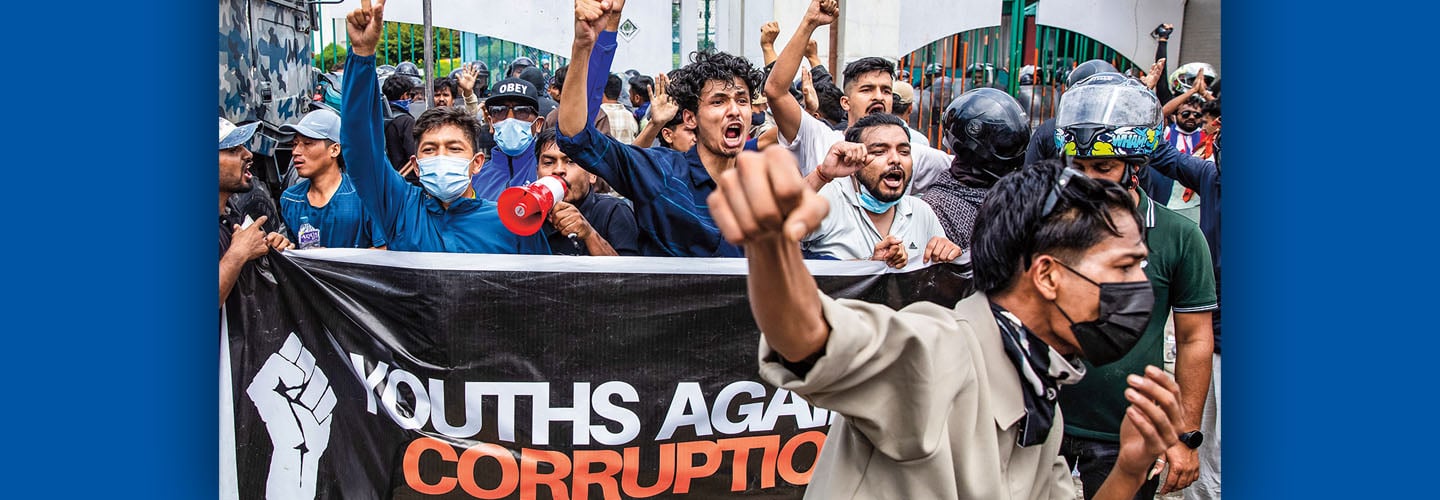Violent protests erupted across Nepal in September, plunging the democratic South Asian country into anarchy. Mobs burned and looted thousands of buildings, including police stations, government offices, and the homes of politicians.
The protesters were mostly teenagers and young adults declaring themselves to be the voice of Nepal’s Gen Z. Their anger was triggered by a government ban on social media, but it was fueled by years of resentment over corruption and wealth inequality.
“Every one of us has had enough,” said student Safal Andolankari, 26,
as smoke from a burning vehicle drifted over his head during one
of the September protests.
In Kathmandu, the nation’s capital, protesters occupied part of the Capitol until police dispersed them using rubber bullets and water cannons. The violence escalated when police began firing live ammunition, hitting protesters in the head and chest. By the end of the day on September 9, more than 70 people had been killed, the military had deployed troops to restore order, and the country’s prime minister, K.P. Sharma Oli, had resigned.
“To our now former prime minister, I must say that resigning from your post is not enough,” student Merina Majarjan, 30, told AFP News Agency, mourning the deaths of young people who clashed with police on the first day of protests. “I call this a mass murder. You should be accountable for what happened yesterday.”
Violent protests erupted across Nepal in September. The democratic South Asian country was in chaos. Mobs burned and looted thousands of buildings, including police stations, government offices, and the homes of politicians.
The protesters were mostly teenagers and young adults. They declared themselves to be the voice of Nepal’s Gen Z. Their outburst began because of a government ban on social media, but it was fueled by years of anger over corruption and wealth inequality.
“Every one of us has had enough,” said student Safal Andolankari, 26, as smoke from a burning vehicle drifted over his head during one of the September protests.
In Kathmandu, the nation’s capital, protesters occupied part of the Capitol. Police used rubber bullets and water cannons to make them leave. But the violence escalated when police began firing live ammunition. Protesters were hit in the head and chest. By the end of the day on September 9, more than 70 people had been killed. The military had to deploy troops to restore order. K.P. Sharma Oli, the prime minister, resigned.
“To our now former prime minister, I must say that resigning from your post is not enough,” student Merina Majarjan, 30, told AFP News Agency. She was mourning the deaths of young people who clashed with police on the first day of protests. “I call this a mass murder. You should be accountable for what happened yesterday.”

